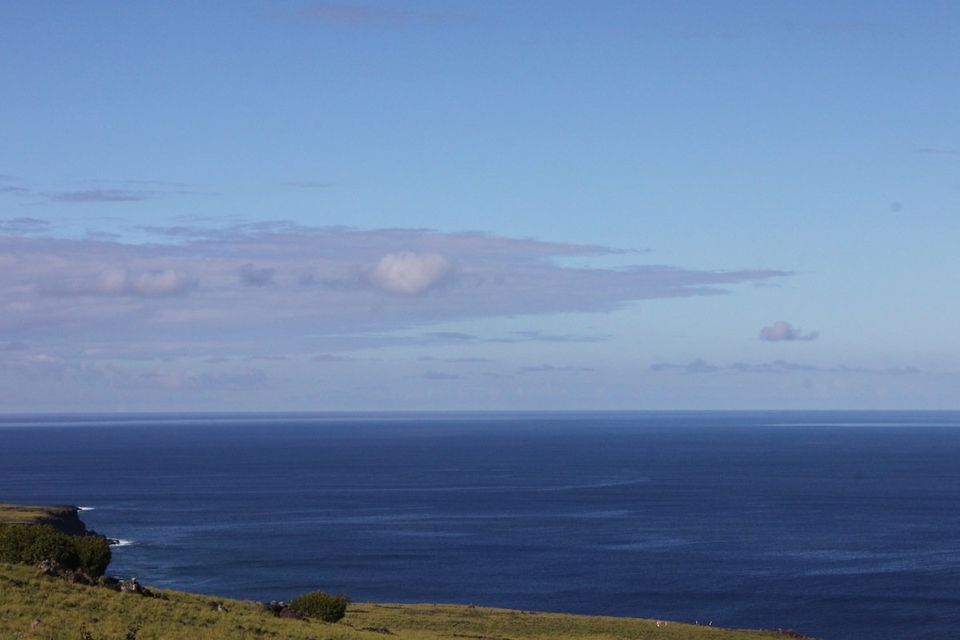If you want to get really, really off the grid, fly 5,991 miles from your home airport to Easter Island. You'll have to stop once, in Lima, but this will be the easiest part of the journey, an air-conditioned, half-day respite you will look back on fondly as you suck bone-dry air of the cabin of the 767 winging you to the middle of the Pacific.
Once you hit the ground in Easter Island, you'll want to clean up at a hotel and then link up with a local guide, who can explain to you the route you're about to take along the unsettled and mostly wild northern coast of the island, a place you can only reach "by foot, horse, boat or helicopter."
Don't bother asking if there's even a helicopter on the island. You're planning to walk.
Some of the best travelers were walkers, and you'd do well to emulate their method to well and truly disconnect. Study the Appalachian Trail through-hikers, who disconnect even as the trail cuts close to the biggest cities in the U.S. Bill Bryson walked through thousands of miles of woods; Rory Stewart walked across Afghanistan; you can handle Easter Island.
Set out from your hotel with a backpack full of water and sunscreen slathered on every exposed bit of skin. This might be the one time it's okay to wear a bandana (wrapped around your neck to keep off the sun). Break out that hat you bought on a whim during your layover. There's no shade once you set out on this journey to disconnect.
Drive past Ahu Akivi, the only platform whose statues face outward to the sea rather than inward to watch over islanders. Snap a few photos with the other tourists, then leave them behind. You really, really want to get away, so make for the trailhead at Ahu Te Peu. You might bump into a few other hikers, but you'll soon leave the behind too, as your guide cuts through stands of eucalyptus trees and hops expertly over lava stones strewn across the sloping plains. Try to keep up, would you?
After a bit of small talk, you and your guide will settle into a silent rhythm, tramping your way along the western coast of the island at a safe distance from the 40-meter cliffs that plunge down to the Pacific. You'll stop occasionally to observe prehistoric architecture, a felled moai statue here, the foundation of a native home there. You'll hear little more than the breeze of the sea and the chirping of birds. Your guide might say something to the cattle grazing nearby, but they'll stand unmoving, as if speechless to the mere fact that you've made it this far.
You'll keep walking until you spot a small ranch house, where workers sometimes overnight when they work this far from town. You may see a figure on the horizon near the shelter, silhouetted against the stark blue sky, but you won't see anyone as you approach. You'll break for lunch, maybe some sandwiches and local fruit juice, in the shade of a mango tree.
As you press on, still navigating the volcanic boulders that cover this northern coast of the island, you'll stop for a moment or two to take a swig of water and ponder the deep cobalt of the waves. You and your guide are the only people on this ridge, thousands of miles from the nearest land and seemingly all alone in the middle of the huge ocean.
You're not the first people to ever come here, but you are here right now and, for a few moments, that's all that matters in the whole world.
